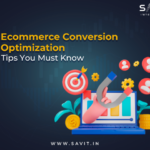Adobe Commerce is the owner of the open-source Magento eCommerce website platform. For B2C and B2B customers, it aids in the creation of multichannel experiences by brands. One of the more well-known eCommerce systems, Magento, is used by more than 20% of the top 1000 online merchants in the world.
Online retailers can combine their product catalogs with Google Merchant Centre, Google Ads, the Adobe Experience Cloud, and Amazon through Magento. However, in order to effectively utilize its eCommerce capability, you must carry out strategic on-page SEO.
Here’s a Magento Guide, which aims to help you get the most out of this fantastic eCommerce powerhouse.
What Is On-Page SEO for Magento?
To increase search engine exposure and organic traffic, on-page SEO concentrates on optimizing features on your Magento website, including page speed and keyword density. In actuality, this means that your eCommerce store will appear higher on search engine results pages (SERPs) when users search for items online because the keywords they employ match those on your eCommerce web pages.
Publishing pertinent, high-quality content and optimizing headlines and HTML to bring targeted traffic to your online business are all necessary for successful search engine optimization. This increased traffic ultimately increases leads and sales.
On-Page SEO Magento Tips to Expand Your Online Store
Magento is among the most SEO-friendly eCommerce platforms right out of the box, but there is still a lot you can do in terms of Magento SEO to stand out from the competition and gain the favor of search engines.
1. Select a High-Quality Host
On-page SEO is compromised by low-quality website hosting, especially if the site loads slowly. Search engines penalize and rank lower on SERP websites that take too long to load. The majority of online shops use dedicated servers because shared hosting is frequently inefficient for big, complicated websites. One of the best web hosts for Magento stores is Bluehost, which has a solid reputation and offers plenty of disc space and unrestricted data transfer.
2. Use files named Robots.txt
The URLs on your Magento eCommerce site that search engine robots can and should visit are specified in robot.txt files. These files are not required. However, they improve SEO by preventing crawlers from crawling the wrong pages. Although their presence is optional for a website to function, SEO relies heavily on properly arranging these files. For instance, Google typically does not index messages that customers receive after completing an order or filling out a form since they lack actual SEO value.
To make sure your pages are set up properly, check the Magento Guide.
3. Produce a sitemap in XML.
A domain’s website pages are listed in an XML sitemap. It gives search engines crucial details about your website’s pages, videos, and other files and the connections between them. The search engine bots can swiftly scan and index your website because it functions as a directory for all your pages. With an XML sitemap designed expressly for search engines, you can retain the potential to be indexed by Google again. Magento 2 does not support automatically produced XML maps, in contrast to Magento 1. Third-party plugins, however, can quickly fix this tiny nuisance.
4. Make Canonical Tags active
An effective technique to notify Google and other search engines which URLs you want them to index is with canonical tags. If you have several versions of the same page, a canonical link meta tag will help you avoid duplicate content problems and ensure your SEO is strong. On the Magento platform, URLs can be changed to assist Google in giving similar content pages on different websites the appropriate search value. You must either keep just one category path in a product URL key or remove the category from the URL so that each product has its own address in order to prevent duplicate pages.
5. Remember to Use the Href lang Tag
Some Magento eCommerce stores feature multiple shop views, meaning they have the same English content but are geared toward other markets. Hreflang tags are pretty helpful in this situation because Google frequently fails to recognize slight changes in the currency and interprets these pages as duplicate material. Magento contains a hreflang tag (code) to differentiate between pages with various URLs and essentially the same content to solve this problem, ensuring that on-site SEO is not adversely impacted.
6. Carry out a keyword analysis
On-page SEO is founded on keyword research. You can use this information to inform your content strategy and web text so that your website and other marketing materials rank highly on search engine results pages. It also shows you what terms your customers are actively looking for and how competitive they are.
Researching keywords is crucial for three reasons:
Instead of what you assume people are searching for, it informs you what they actually are looking for. Search engines only give your website a ranking if they are aware of its subject. Google will rank you for the keywords you use if you use them on several pages of your Magento website.
Finding relevant keywords for inclusion in blogs and other marketing materials might send a lot of targeted visitors to your website.
Every digital marketing endeavor begins with keyword research. It’s a continuous process, so if your keywords have remained the same for the past six months, you may want to perform an audit and replace any that are out-of-date or unpopular.
After you have finished your keyword research, you can start writing pages and content with those keywords in mind. This will aid in your website’s internet visibility when combined with other SEO techniques.
7. Ensure Quick Website Loading
Your Magento store must load quickly to boost visitor engagement and lower the bounce rate. The window for prospective conversions is extended by a website optimized for quick site speed, improving user experience (UX) and keeping visitors interested for longer. The number of page visits can drop by 11% with a one-second delay. Unoptimised graphics, bandwidth restrictions, huge JavaScript files, slow servers, and an abundance of adverts can all contribute to a slow website.
With little expert SEO assistance, the majority of these problems can be fixed. In addition to picture compression and Javascript file minification, you might consider utilizing a content delivery network (CDN).
Each user that accesses your website will submit requests to the same server if it is hosted on a single server. Due to this, whenever your website experiences high traffic, each request’s processing time slows down the load times for all of them.
8. Does Your Magento Store Support Mobile Devices?
Mobile searchers began to outnumber desktop searchers as early as 2015. Soon after, Google moved to mobile-first indexing and started indexing and ranking websites’ mobile versions. Even in desktop search results, mobile user experience significantly impacts search engine rankings. Rankings have always taken into account user experience, and mobile experience is crucial.
E-commerce retailers must consider design factors like screen size, easy navigation, and finger-friendly navigation while developing online platforms. Additionally, customers engage with brands via various platforms and gadgets. It’s usual for people to add items to their wishlist on their mobile device, check those items out on their desktop, and vice versa—a superb website’s design balances aesthetic appeal with practicality, supported by robust SEO. The same applies to your Magento website.
9. Produce Top-Notch Content
What does it mean when marketers talk about the significance of quality content? Even if a blog is objectively “high-quality” and well-written, its SEO performance will be poor if it lacks any keywords. This is not the same thing as high-quality content in the context of digital marketing. Similarly, keyword-rich material that aims to rank highly in SERPs is similarly low quality.
The following ideas might be presented if we had to create an SEO Magento guide for high-quality content:
Contextually appropriate and customized: These standards serve as the minimum requirements. You must specifically address a certain context in your Magento marketing content. Ensure your content is distributed and in the appropriate format at all times and places.
Findable: Your content must adhere to the minimum standards for Magento SEO, like having the appropriate keywords, meta descriptions, meta tags, and image tags, among other things.
Insightful and valuable: Creating excellent and helpful content for audiences is one of the fundamental principles and SEO components of inbound marketing. Therefore, your material should benefit your audience.
In addition to content marketing assets, optimizing every piece of content on your website is crucial. The meta titles and descriptions for each page, as well as the “about” and other pages of your website, should all be optimized.
Hire Magento Professionals to Boost Your SEO
This Magento SEO advice should be valuable to you. On-page Magento SEO optimization is a technical procedure that, when done correctly, may be beneficial. Still, it runs the danger of failing if you are unaware of Magento SEO best practices.
Magento SEO service by Savit Interactive can be of assistance here. We work as an eCommerce SEO agency focusing on Magento development and SEO. With years of combined experience in digital marketing, our specialists can turn your eCommerce platform into a profitable enterprise. Learn more about our Magento on-page SEO offerings.








































